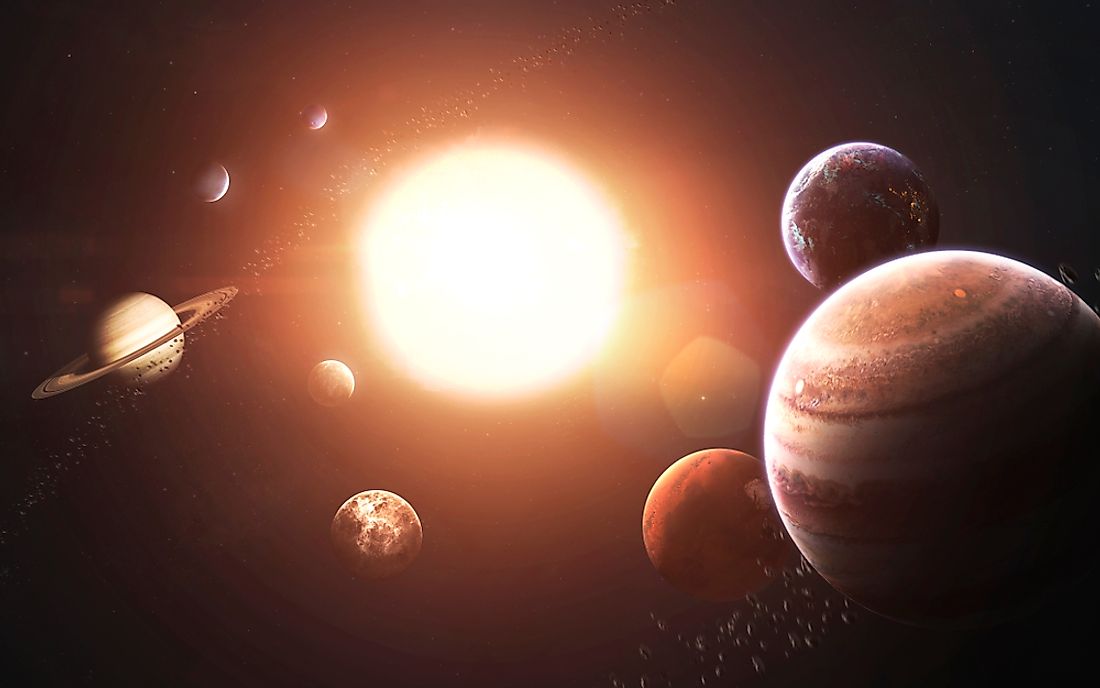The 7 Wonders Of The Solar System

7. Olympus Mons
Olympus Mons is a massive shield volcano located on the planet Mars. Since it is the largest volcano in the Solar System to be discovered till now, it deserves to be one of the 7 Wonders of the Solar System. Olympus Mons is two and a half times as tall as the Earth’s highest feature, Mount Everest.
6. The Rings of Saturn
Another of the 7 Wonders of the Solar System, the rings of Saturn is the Solar System’s most extensive planetary ring system. The ring system comprises of small particles of water, ice or rocky material, ranging in size from a few micrometers to several meters. These particles orbit around the Saturn planet and reflect light that makes the Saturn appear bright.
5. The Oceans of Earth
Included among the 7 Wonders of the Solar System are the oceans of our planet Earth. The oceans cover about 71% of the Earth’s surface. Nowhere else in the Solar System, such vast stretches of water have been discovered. The oceans are not only a wonder because of their water content but also these saline water bodies are home to a great diversity of marine life.
4. The surface of the Sun
The sun is the center of the Solar System around which all the celestial bodies in the Solar System revolve. The sun is almost a perfect sphere of hot plasma and is the main source of energy that sustains all life on Earth. The surface of the sun is completely unapproachable due to the extremely high, scorching temperatures of about 6,000 K that would burn to ashes anything that comes in the vicinity of the surface. Hydrogen (~73%), helium (~25%), and smaller quantities of other gasses make up the sun. For these reasons, the surface of the sun is regarded as a Wonder of the Solar System.
3. The Asteroid belt
Located roughly between the orbits of the two planets of Jupiter and Mass, is a circumstellar disc of the asteroid belt. This belt includes a large number of asteroids including the largest ones: Ceres, Vesta, Pallas, and Hygiea. The smallest bodies of the Asteroid Belt as tiny as a dust particle. These asteroids also revolve around the earth in their own orbits.
2. The Great red spot -
The Great Red Spot, an anticyclonic storm, has persisted for at least 186 years (and as per other estimates over 300 years) on Jupiter, 22° south of the equator of the planet. The storm is believed to have a diameter greater than 40,000 km in diameter. Interestingly, the Great Red Spot is large enough to envelop an area two to three times the size of Earth. For all these reasons, it is regarded as one of the Solar System’s wonders.
1. Enceladus
Enceladus is Saturn’s sixth-largest moon. The most interesting fact about Enceladus is that it is largely covered by clean, fresh ice reflecting all the light of the sun that strikes its surface. It also has a highly varied terrain ranging from young, tectonically deformed landscapes to heavily cratered regions. The Enceladus is also enlisted as one of the 7 Wonders of the Solar System.











